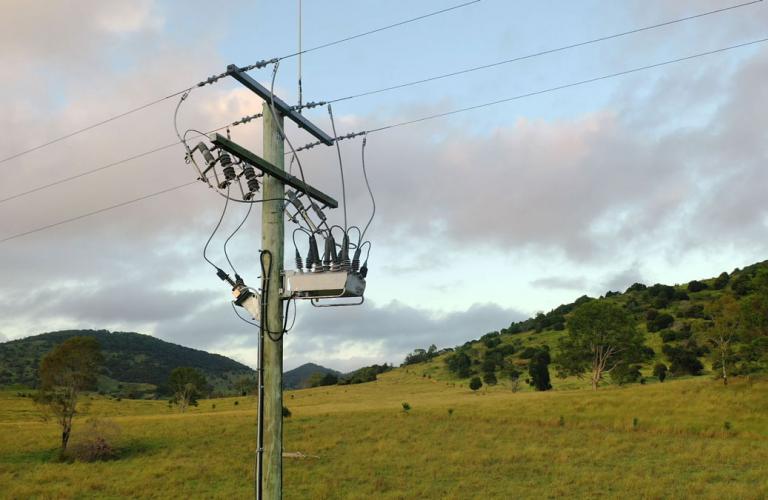#42 Marcela St., Damong Maliit, Brgy. Nagkaisang Nayon, Novaliches, Quezon City 1125, Metro Manila, Philippines

As electrical engineers, we’re charged with mitigating the risk of fire being initiated from the distribution grid, and whilst there are a lot of pseudo-technical claims for fire mitigation of various products on the market, there is a single golden number which is a metric for evaluation on whether a method, product or technology will give you fire mitigation.
And that number is 0.1 A2s
Electrical engineers familiar will fuses will note, “that looks like a thermal energy rating for fuse arcs”, and they would be exactly right. It makes sense that the formula for calculating arc thermal energy would be appropriate for determining the amount of arc energy required to start a fire with electricity assets.
The amount of thermal energy from an arc is calculated as:
P = I2t
When a power asset comes into contact with flammable material, such as cable down, broken insulator, branches brushing up against powerlines, or some unfortunate rodent circumventing your insulation creepage, there is a release of arc energy. Rigorous academic research into the physics of fire start with medium voltage power lines [1][2][3][4][5] has shown that if you keep the arc energy under 0.1A2s, you have over 90% chance of stopping the fire. If you let it exceed this threshold and the heat is contacting flammable material, you have a fire.
On the medium voltage grid, if you have a fault where any powerlines come into contact with flammable material, you need to stay under 0.1A2s of energy to have any chance of stopping a fire.
The most important point is that 0.1A2s is not very much at all. Let’s say you have a 10A fault, or a protection device with a minimum pickup of 10A, how much energy would it let through on a fault?
P = I2t
0.1 = 102t
Solve for t:
t = 0.1 / 102
t = 0.001 seconds
How many protection relays and circuit breakers do you know of that can clear a fault in one millisecond?
If your SEF pickup is 10A, you have 1ms to detect, trip and stop arcing in order to stay under the limit and have 90% chance of fire mitigation.
“But our network SEF setting is 4A, we’re safe right?”
Let’s find out:
P = I2t
0.1 = 42t
t = 0.1 / 42
t = 0.00625 seconds
t = 6.25 milliseconds
Not many SEF protection systems can detect and clear a fault in 6.25ms, but if you don’t, fire is essentially guaranteed.
In fact, above 1A of residual current, the only benefit any protection devices would provide is an estimate of where the fire is.
But what if you can protect on 500mA of SEF?
P = I2t
0.1 = 0.52t
t = 0.1 / 0.52
t = 0.4 seconds
t = 400 milliseconds
That seems much more reasonable. 400ms is well within the reach of protection devices for detecting and clearing faults.
How to limit the risk of fire start from electrical assets
Essentially, faults that draw greater than 1 ampere of current into flammable material will cause a fire, almost instantaneously.
For the medium voltage distribution engineer, products and technologies that claim fire mitigation on reclosing techniques or speed of operation have no hope of staying under the golden number of 0.1A2s unless they can operate on less than 1A of residual current.
No circuit breaker or recloser can stop a fire if the fault current is above 1A.
If you want to mitigate against this class of fault, you need to limit the fault current before it occurs. This is where Resonant Earthing, Petersen Coils, and REFCLs come into play, and mechanical techniques such as undergrounding of powerlines. These techniques all work on limiting the fault current before it occurs, instead of trying to beat physics and race the thermal release of an electrical arc.
For any fault that is below 1A, such as high impedance faults, trees leaning up against powerlines, failing insulators, lines down on insulating surfaces, it is possible to detect and protect to stop 90% of fires from starting.
To do this, you need balanced feeders and accurate protection to allow SEF settings of 500mA.
Real Fire Risk Mitigation
To provide any fire mitigation benefit, you need to stop faults above 1A occurring in the presence of flammable material. Insulating your powerlines, undergrounding cables, adding cable spacers to stop line to line faults, changing your earthing to Resonant/Compensated earthing are all techniques that do this.
Once the fault happens, the best you’ll get from your protection assets is a fire location estimation.
Technologies that claim fire mitigation because you can trip faster and stop fuses from blowing or reducing reclosing energy may stop a second fire, but they’ve done nothing to stop the first fire. It’s not their fault, it’s not what they were designed to do.
The only technically plausible method for fire mitigation with protection devices is to protect against high impedance faults before they leak 0.1A2s into flammable material.
“We have been involved in recent research with several of our customers focused on bushfire mitigation and developed solutions as part of this research to provide a 200 mA SEF minimum setting range which has been successfully field trialled.” Reports NOJA Power Group Managing Director Neil O’Sullivan.
For more information, visit www.nojapower.com.au or contact your local NOJA Power Distributor.
References
[1] Acil Allen Consulting, ‘Regulatory Impact Statement Electricity Safety Bushfire Mitigation Regulations 2015’, 1, Nov. 2015.
[2] T. Marxsen, ‘Vegetation Conduction Ignition Tests Final Report’, Marxsen Consulting, 1, Jun. 2015.
[3] T. Marxsen, ‘Prevention of Bushfires from Powerline Vegetation Faults’, T&D Magazine Australia, Jun-2018.
[4] Department of Energy and Earth Resources Victoria, ‘Power Line Bushfire Safety: Victorian Government Response to the Victorian Bushfires Royal Commission Recommendations 27 and 32’, Dec. 2011.
[5] T. Marxsen, ‘New Research on Bushfire Ignition from Rural Powerlines’, T&D Magazine Australia, Feb-2012.